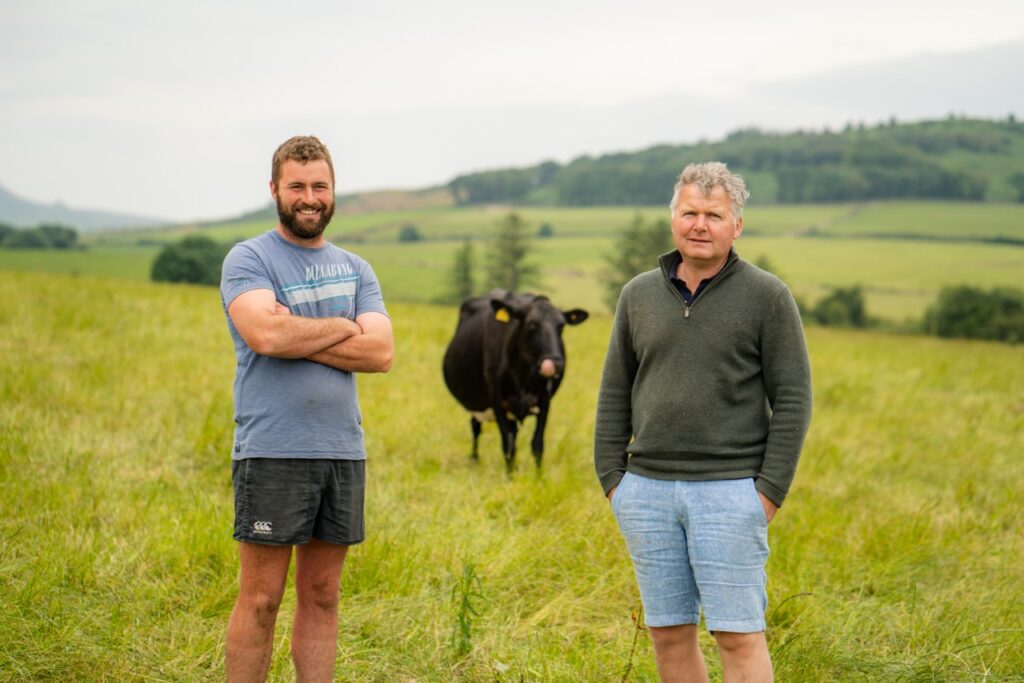
Dafydd Wynne Finch grew up on Cefnamwlch Farm on the north side of the Lyn peninsular near Tudweiliog. He took over the farming business 18 years ago and converted it from a beef and sheep farm to a dairy on a grazing rotation system with a focus on producing milk solids butterfat and protein for cheese.
Dafydd said: “At the moment, these fields get grazed intensively and it’s all about the rye grass monoculture and the cows, we don’t leave much space for nature. We’d like to change that whilst maintaining a productive, profitable farming system. This operation will be a big old ship to turn so we are going to start on a smaller area with an experiment in letting grass get more mature and deeper rooted. It’ll mean a whole new way of grazing. As farmers we are genetically predisposed to produce food, but I think we need to produce more than that.”
Cefnamwlch is run on a share farm basis with Carwyn Rhys Davies, who owns a percentage of their Jersey cross cows. Carwyn is fully signed up to the transition to regenerative farming but accepts there will be challenges in maintaining profitability alongside environmental goods. He said: “I have a big interest in change because inputs are going up each year and the effect on the planet is important. When we graze the new regenerative herbal lays it gives me a real boost to see how many insects and birds there are compared with the next door field where there’s nothing. I’ve never looked at the nature side of things before, but it’s really opened my eyes. If we can be self-sufficient profitable and look after the environment that’s everything ticked.”
As well as looking after the health of his fields, Dafydd is keen to improve the woodland on the farm. He has instigated a new management system called continuous cover forestry whereby instead of clear felling, rides are cut and plantations are thinned out to allow an understorey to grow. He said: “We will plant a few different conifers and some hard woods to enrich the existing mix and the trees will eventually self-seed in the clearings. In the initial stages it looks a bit brutal but, it’s a long-term project but it’s one we are very excited about.”